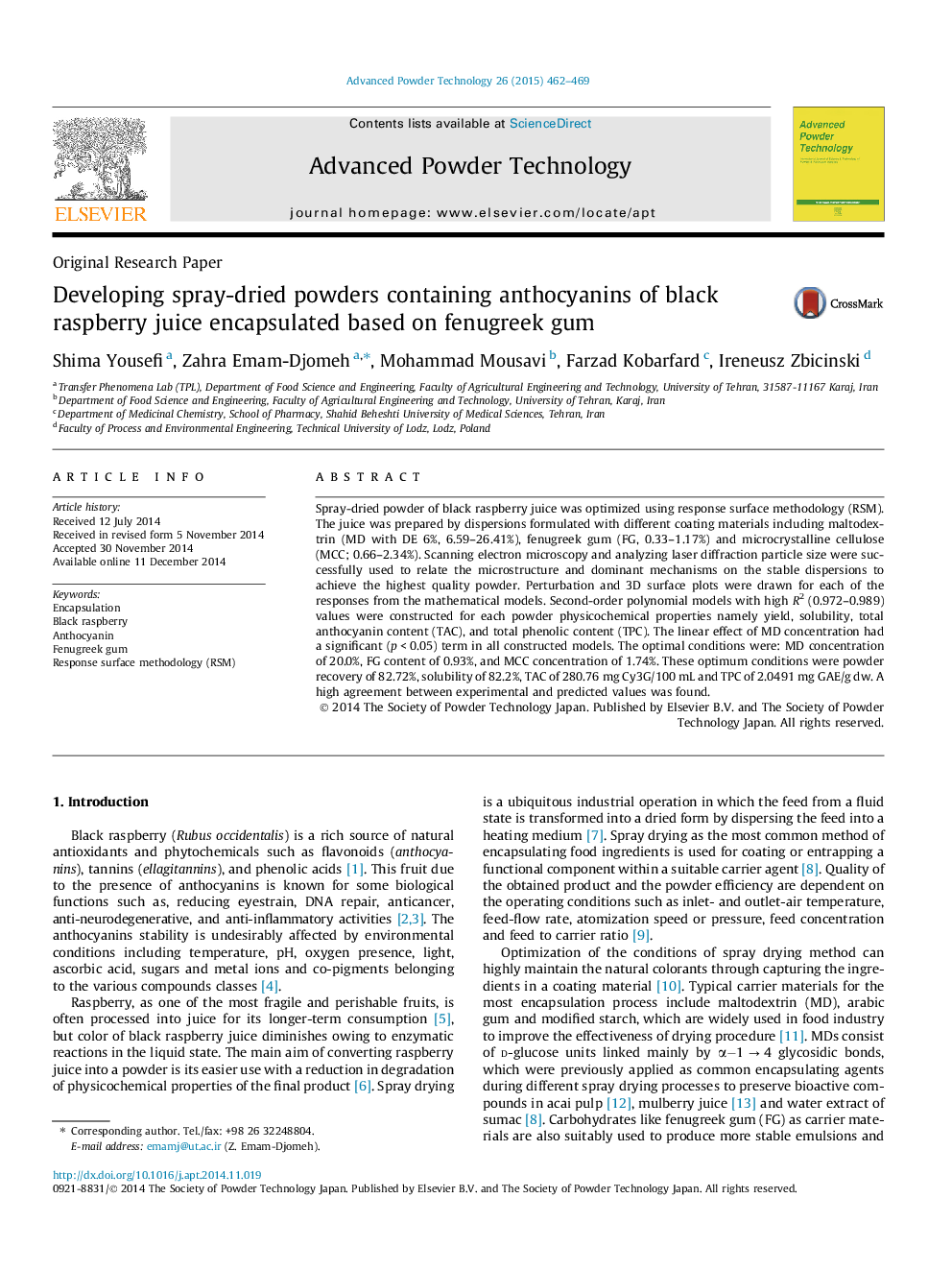| Article ID | Journal | Published Year | Pages | File Type |
|---|---|---|---|---|
| 144452 | Advanced Powder Technology | 2015 | 8 Pages |
•Development and characterization of the powders of black-raspberry juice.•Process was optimized using RSM modeling.•Second-order polynomial models were constructed for each response.•Responses were yield, solubility, total anthocyanin, and total phenolic content.•High contents of FG and maltodextrin improved the powder physicochemical attributes.
Spray-dried powder of black raspberry juice was optimized using response surface methodology (RSM). The juice was prepared by dispersions formulated with different coating materials including maltodextrin (MD with DE 6%, 6.59–26.41%), fenugreek gum (FG, 0.33–1.17%) and microcrystalline cellulose (MCC; 0.66–2.34%). Scanning electron microscopy and analyzing laser diffraction particle size were successfully used to relate the microstructure and dominant mechanisms on the stable dispersions to achieve the highest quality powder. Perturbation and 3D surface plots were drawn for each of the responses from the mathematical models. Second-order polynomial models with high R2 (0.972–0.989) values were constructed for each powder physicochemical properties namely yield, solubility, total anthocyanin content (TAC), and total phenolic content (TPC). The linear effect of MD concentration had a significant (p < 0.05) term in all constructed models. The optimal conditions were: MD concentration of 20.0%, FG content of 0.93%, and MCC concentration of 1.74%. These optimum conditions were powder recovery of 82.72%, solubility of 82.2%, TAC of 280.76 mg Cy3G/100 mL and TPC of 2.0491 mg GAE/g dw. A high agreement between experimental and predicted values was found.
Graphical abstractFigure optionsDownload full-size imageDownload as PowerPoint slide
